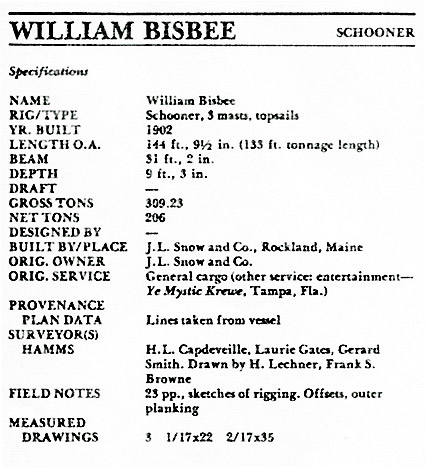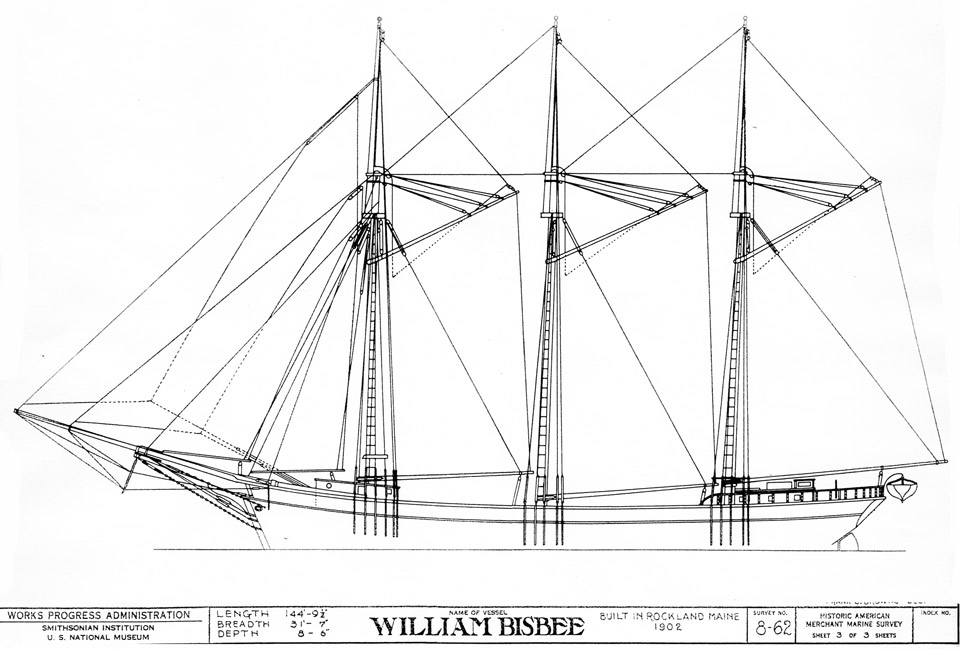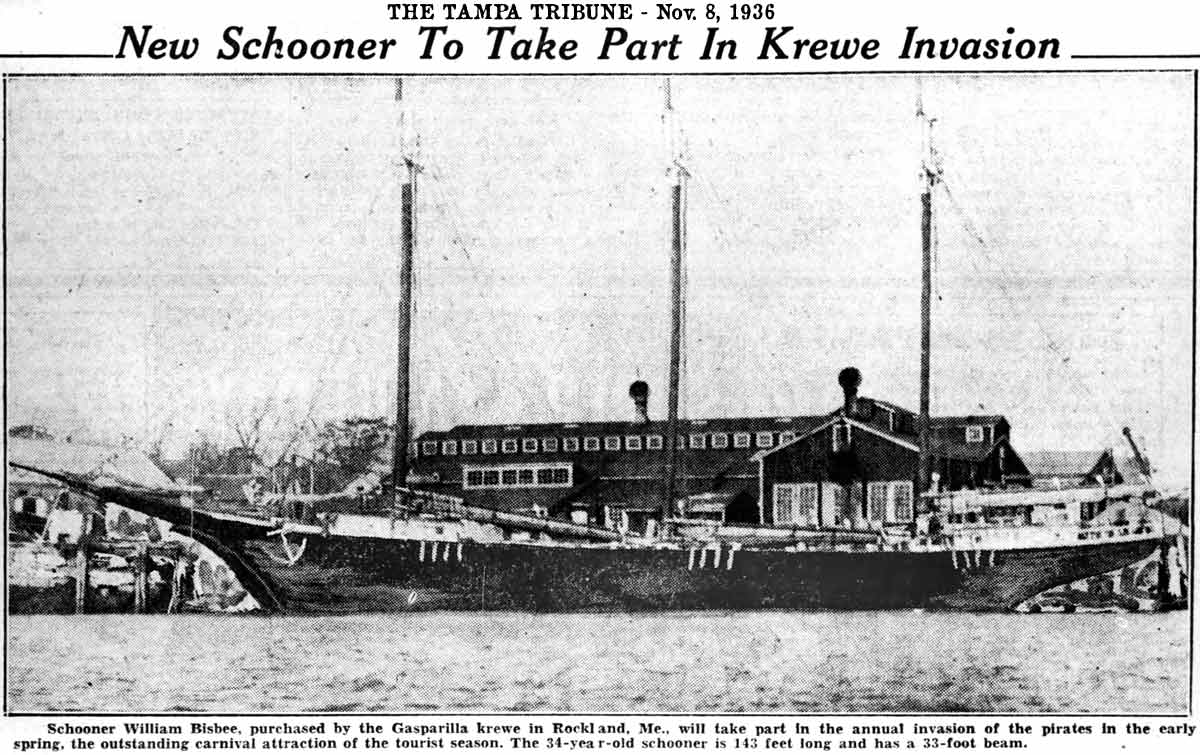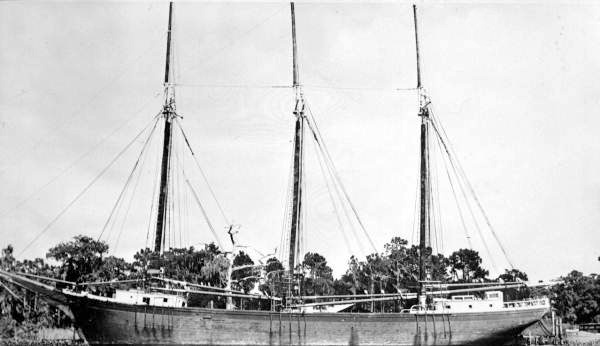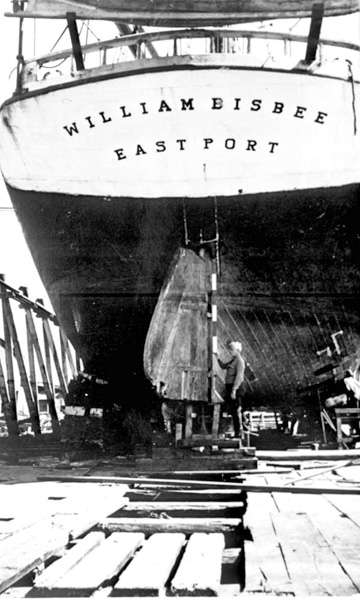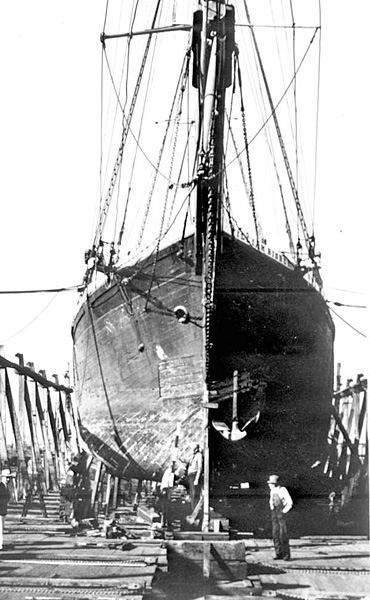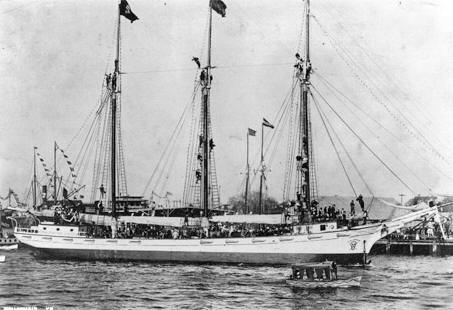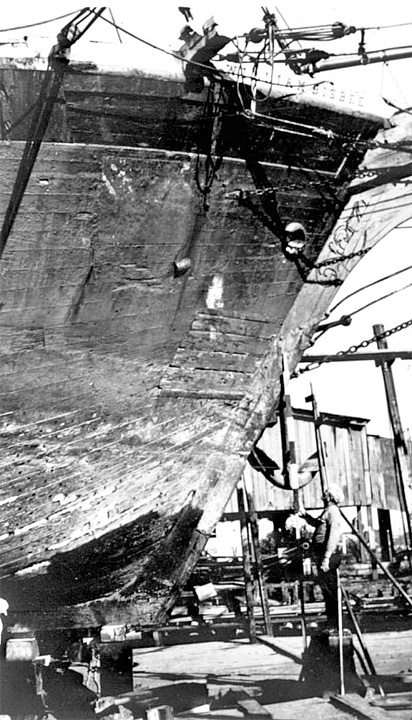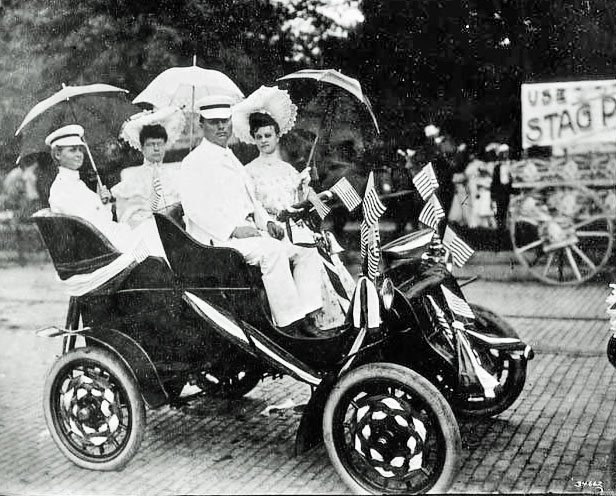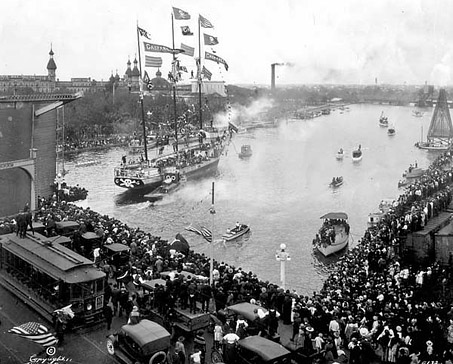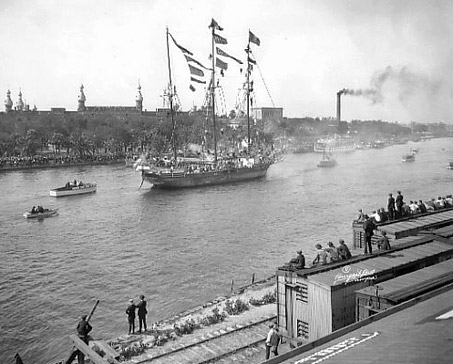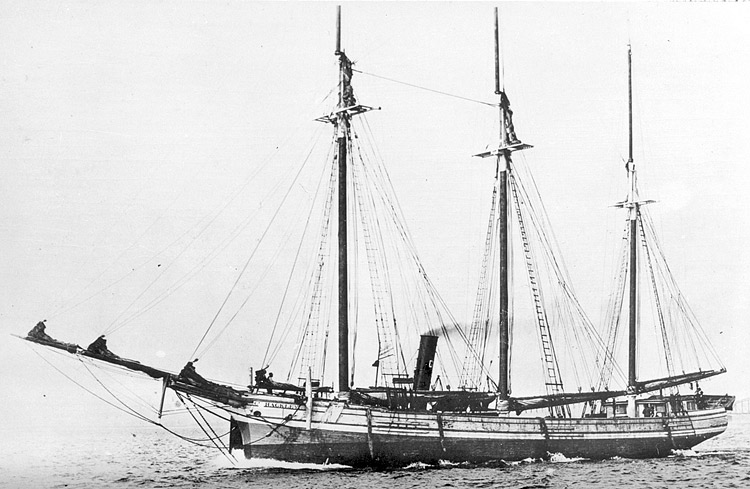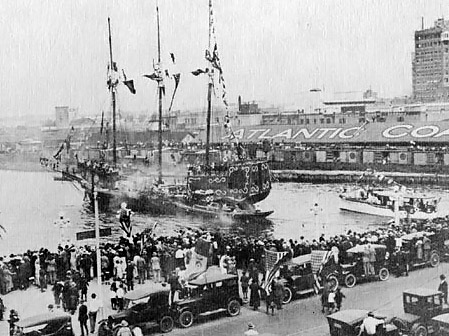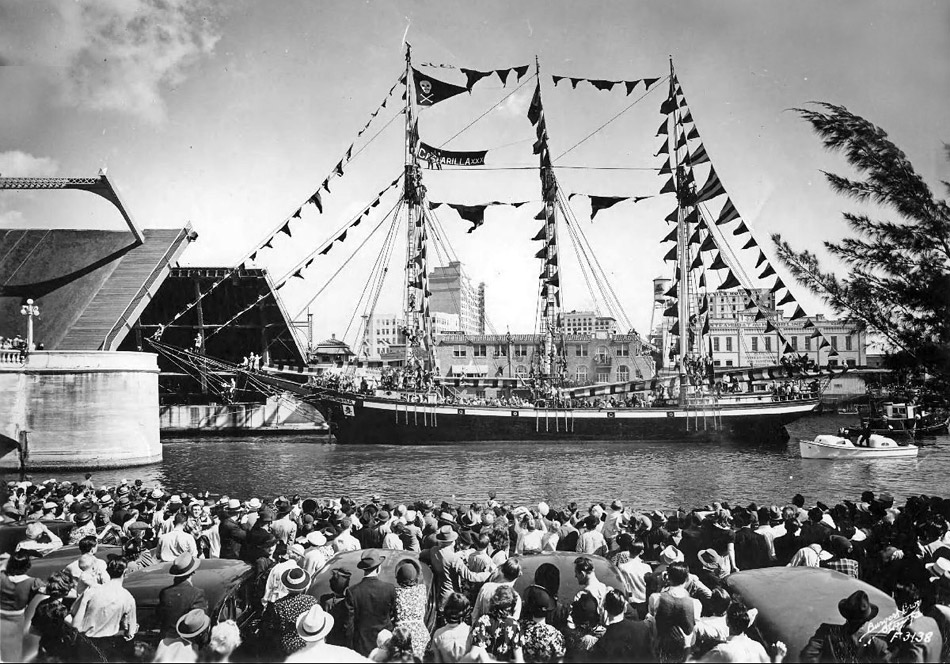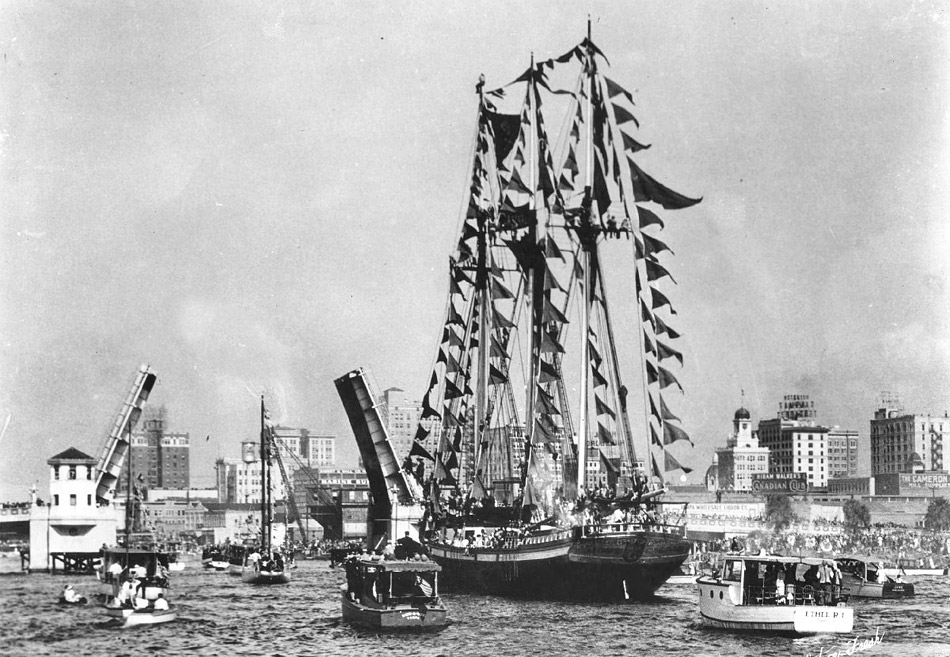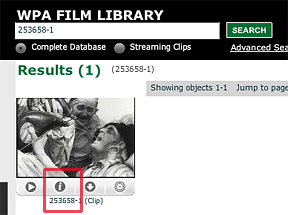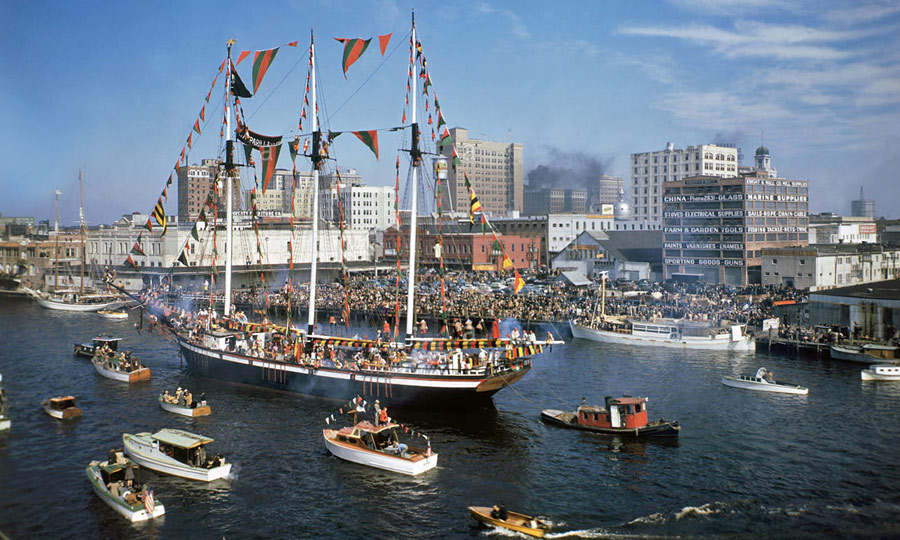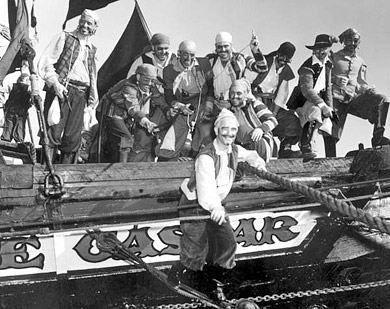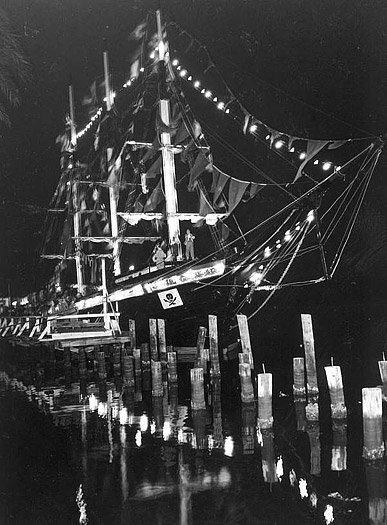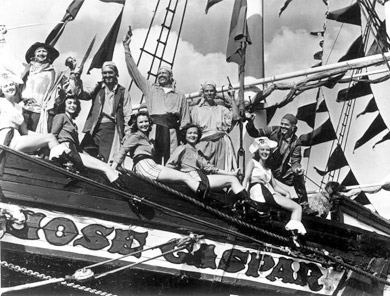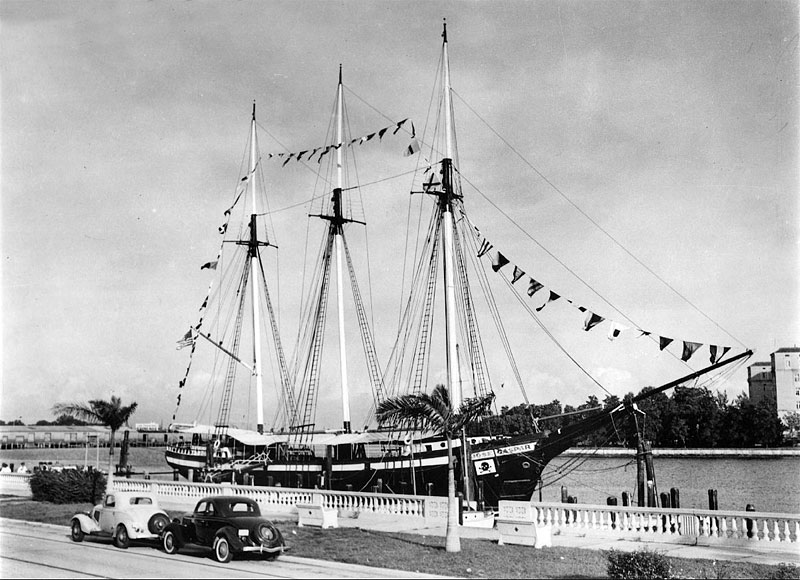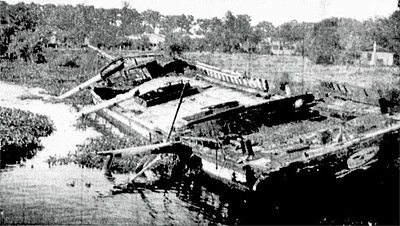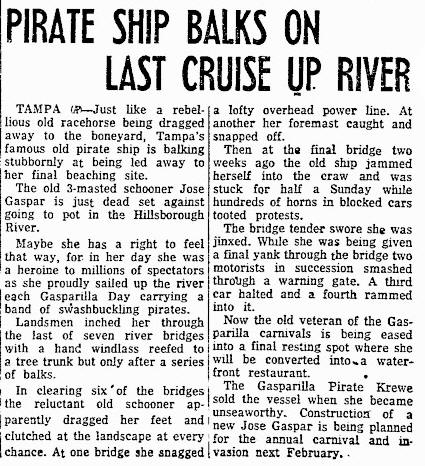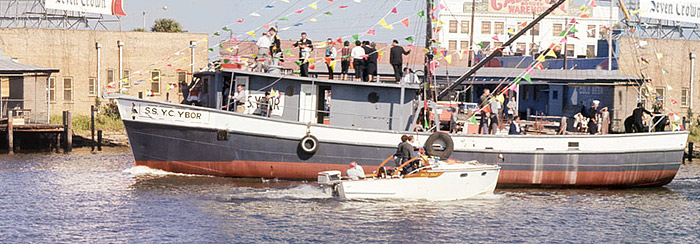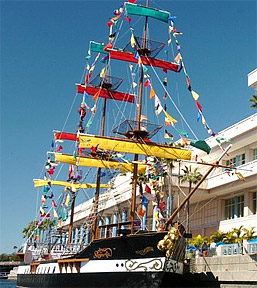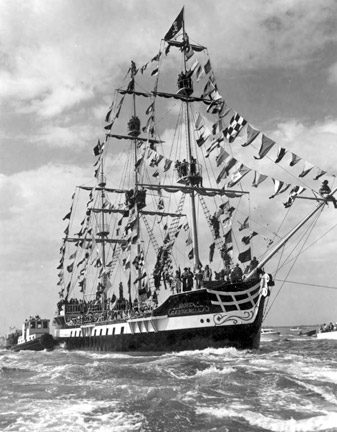We are
indebted to Captain William H. Davis, commander of the William Bisbee
on her last trip from Rockland, Maine to Tampa, Captain G.A. Hanson,
commander of Ye Mystic Krewe of Gasparilla of Tampa, the records of
the U.S. Customs office and logbooks of the vessel for information
regarding this vessel.
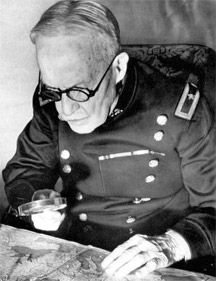 |
The William
Bisbee was built at Rockland, Maine by J.L. Snow and Co., in 1902.
She was designed for the coastwise trade and operated successfully in
and out of the Atlantic coast ports from Nova Scotia to Central
America, also Gulf of Mexico ports. She competed successfully
with power-driven vessels showing exceptionally fast time between
ports of call.
She was named for U.S. Army
Brigadier General
William Henry Bisbee (1840 - 1942).
|
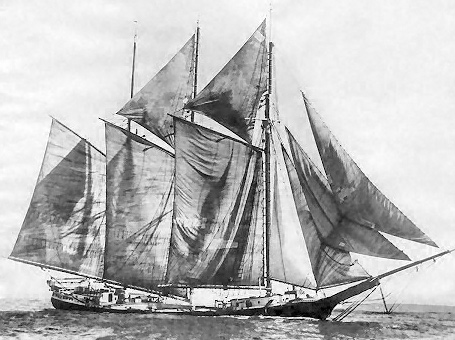 |
| |
|
The William
Bisbee fully laden with a cargo of lumber, sitting low in the water
somewhere off the coast of Maine. |
|
Published May 16, 1904
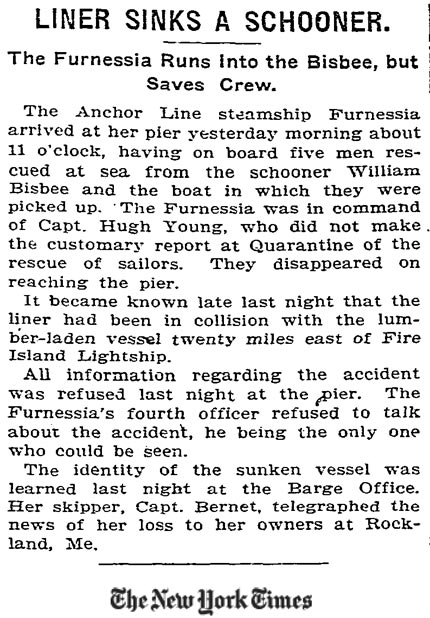
In
1904, while in route from Virginia to
Rockland, Maine, the Bisbee was sold
to R.K. Snow for $7,000.
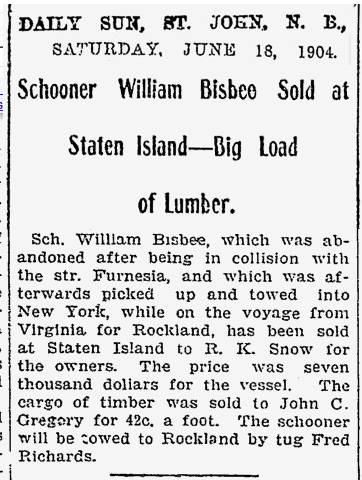 |
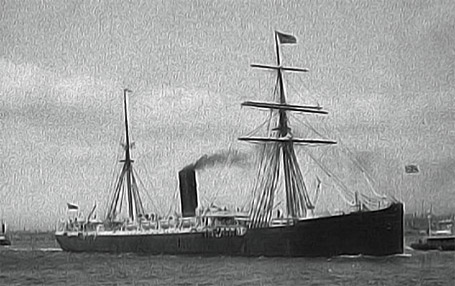
The SS Furnessia
after her 1891 refitting and renovations.
Previously she had two funnels.
Published May 20, 1904
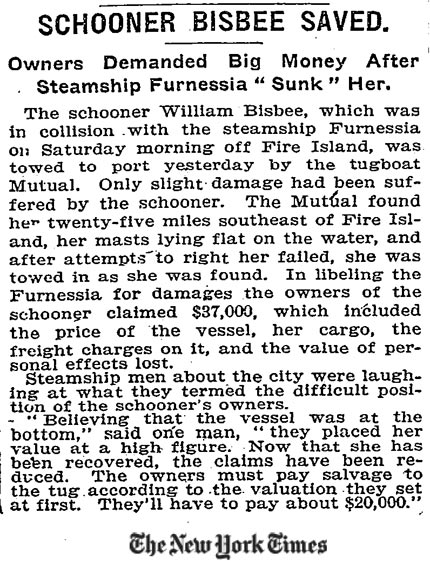 |
| |
|
District Court, S. D. New York. May 4, 1905
Collision—Steamship And Schooner Crossing—Excessive Speed And Want
for Efficient Lookouts In Fog. A steamship approaching New York at
night in a fog came into collision with a crossing schooner 15 miles
east of Fire Island Lightship. Both vessels were sounding fog
signals. The steamship was admittedly going at a speed of six knots,
and had a lookout on the forecastle head, and another in the crow's
nest on the foremast, but neither saw nor heard the schooner until
she was seen from the bridge, when quite near. At this time a white
light was seen on the schooner nearly ahead, which was mistaken for
a stern light, and the steamship changed her course, but had been
little affected thereby at the time of collision. Held, that the
steamship was In fault for excessive speed and want of efficient
lookouts; that the schooner would not be adjudged in fault because
the mate, in the extremity of the collision, set out a false and
misleading light, it being doubtful whether or not it contributed in
any way to the collision, which was fully accounted for by the plain
faults of the steamship.
|
In Admiralty. Suit for collision. MacFarland, Taylor & Costello, for libellants. _ Robinson, Biddle &
Ward and W. S. Montgomery, for claimant.
ADAMS, District Judge
This action was brought by
John Bernet and Richard K. Snow, the part owners and agents of the
schooner William
Bisbee, to recover the damages arising from a collision between
the schooner and the steamship Furnessia
about 1:45 o'clock A. M. of the 15th day of May, 1904, some 15 miles
east of Fire Island Lightship in the Atlantic Ocean.
The Bisbee, loaded
with oak timber and a small amount of general cargo, was bound from
Gallick's Landing, Virginia, to Rockland, Maine. The steamship, with
passengers and general cargo, was bound from Glasgow to New York. The
weather before and at the time of collision was foggy, dense according
to the steamship's contention, but light according to the schooner's.
The schooner was on
the starboard tack and carrying full sail, fore sail, main sail and
spanker, with 3 top sails, 4 stay sails and 3 jibs. She was not making
very much progress, however, probably 3 knots at the utmost, as there
was a very light wind from the eastward. The mate was steering and a
lookout was stationed on the forecastle head. The latter was using a
mechanical fog horn, of a proper size and type. She also had her lights
duly set and burning.
The steamship ran into a haze shortly after
midnight which thickened into a fog about 20 minutes before the
collision. Her compass course was West by North, 2 degrees North,
which allowing for deviation, gave the steamship practically a West
course. She was at first proceeding at her full speed of 14 or 15 knots
but reduced her speed twice, so that, it is claimed, she was going at
the rate of 6 knots at the time of collision. She had a lookout
stationed on the forecastle head and another in the crow's nest on the
foremast. The fog whistle was duly blown. According to the testimony of
the navigating officers, the first knowledge they had of the vicinity of
the schooner was seeing a white light,
less than a point on the steamship's port bow, in close proximity, which
they took to be a ship's stern light. The wheel was put hard-a-port to
clear the vessel which was supposed to exhibit the light, and when the
steamship was beginning to feel the influence of the helm, a green light
was seen on the port bow, whereupon the steamship was reversed at full
speed, but it was too late to check her headway materially and she
struck the schooner a hard blow a little
abaft amidships on her starboard side, which turned her over.
| |
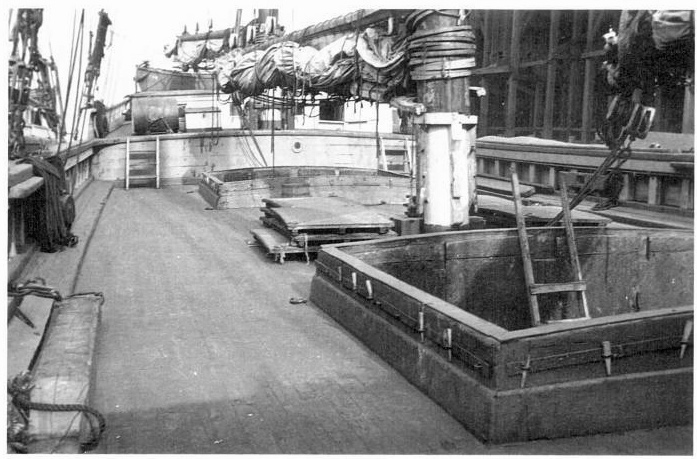 |
| |
Deck view looking aft aboard the three-masted
schooner William Bisbee.
The broad, wide decks, massive bulwark stanchions, and raised quarterdeck
surrounding an after deckhouse are typical of American vessels. |
The members of the schooner's crew were obliged
to take to the boat which hung at her davits astern. They thus
reached the steamship and were taken aboard and brought to New York.
The schooner's contention is that the steamship
was solely at fault for the collision, principally in that she did
not have sufficient lookouts and was proceeding too fast in a fog.
The steamship's contention is that the
collision was solely produced by the
schooner exhibiting a false light which misled the steamship
into changing her course, bringing about the collision.
The steamship did not take the testimony of her
lookouts but they were hunted up by the
schooner and examined on her behalf. Their testimony does not
seem to be of much importance, as there are circumstances which tend
to discredit the witnesses and I do not consider it necessary to
resort to their statements in disposing of the case, as taking the
steamship's own testimony, she should , be condemned for proceeding
at an undue speed in a dense fog and in not having sufficient
lookouts. If her speed was only 6 knots, it was too much in such a
fog, and the fact that she claims the first knowledge she had of the
presence of the schooner was by
observation from the bridge, suffices to condemn her navigation jn
such respect. The schooner had a
mechanical fog horn which she was using some time before the
collision, but it was not heard on the steamship until the collision
was imminent.
The difficult question in the case is
concerning the exhibition of an irregular light by the
schooner. When the steamship's
presence became known to those on the
schooner, the mate, who was then in charge and steering her,
took the light out of the binnacle, and set it on top of the house,
where it remained until nearly the time of the collision, when it
was put back into the binnacle. The mate explains this by stating
that he was afraid of steamers and always used this precaution. It
was very bad practice on his part and if it had any effect in
producing the collision, the vessel should be condemned for it. The
steamship claims that she supposed that the light was one of an
overtaken vessel shown in conformity with Art. 10 of the sailing
rules.
The steamship's change of course to starboard
tends to show that she was misled by the white light, but she was
then apparently herself in fault, in that
she had, by reason of her excessive speed of 6 knots as admitted,
and it was probably more, and want of efficient lookouts, approached
too close to the schooner. The change
of course on the steamship's part was slight, said by her wheelsman
to have been less than a point and by her officers between 1 and 2
points. The wheelsman was probably correct. If it had been made in
the other direction, the steamship would have gone astern of the
schooner and the collision been
avoided. Without any change, the collision would probably have taken
place by the steamship striking further aft on the
schooner, but it is not profitable to
speculate about what might have taken place, if something else had
been done. What was done, was a steamship striking a sailing vessel
in a fog, proximately through her own excessive speed and want of
efficient lookouts. The schooner
exhibited a false 'and misleading light in the extremity of the
collision. The effect of such exhibition is too doubtful to make the
schooner bear any part of the loss
therefore. The collision is too well accounted for by the
steamship's plain faults to allow a division of the damages. Decree
for the libellants, with an order of reference.
|
| |
|
Mutiny on the Bisbee
In March, 1915,
according to her log, the Bisbee was made ready for sea at
Rockland, Maine, when the crew requested shore leave and were refused.
They mutinied and refused to work. The sails were hoisted by the
captain, mate and cook, who manned the ship. The wind blew a gale in
the night as the vessel was rounding Cape Cod. It was necessary to
shorten sail quickly but proved impossible for three men to do so.
The mate prevailed upon the crew to assist, which they did to save their
lives, thus averting a serious disaster.
Mother Nature vs. the Bisbee
On March 2, 3, and 4,
1927, while on a voyage from New York to West Point, Virginia, she
encountered a northeast gale. Sail was shortened. Spanker and
all sails were reefed. She ran before the wind. At 10:30pm the
port anchor was dropped about 20 miles southeast of Hog Island. All
of her anchor chain was dropped about 20 miles southeast of Hog Island.
All of her anchor chain (about 75 fathoms) was run out. A tremendous
sea was running throughout the night. At 1:00am the anchor chain
parted and she drifted helplessly in the gale. Her distress signals
were seen by the steamers Halifax, Allegheny and Philadelphia.
The Allegheny wirelessed the revenue cutter Manning to take
the vessel in tow. The Philadelphia tried to tow the vessel
but parted two tow lines. While trying to get a line aboard, the
steamer collided with the jib boom, carrying it away together with the
bowsprit and all head gear and put the windlass out of commission.
The Philadelphia then stood by until the Manning hove
alongside about 11:00pm. Early in the morning of March 4, the
Manning succeeded in getting a line on board and took the vessel in
tow proceeding to Cape Henry where she was anchored at Lynhaven Roads
where repairs were made. The steward, while assisting the sailors in
handling the lines, fell overboard and drowned.
The
William Bisbee Becomes the José Gaspar
The Bisbee
continued to operate in the coastwide trade until 1932 when she was sold
to Captain Charles Taylor of Eastport who operated her in the offshore
trade until 1936 when she was sold to Victor B. Bendix, a ship and freight
broker who bought her in the interest of Tampa's Gasparilla Festival.
The Bisbee hoisted sail and headed south toward Tampa, smashing into
another ship off Ambrose Light near New York harbor. She reported in
at the Tampa Customs House on Nov. 21, 1936. Bendix resold her "as
is" for $3,150 to Captain G.A. Hanson of Tampa who was commander of Ye
Mystic Krewe. She was soon transformed into the pirate ship,
José Gaspar. This began a new chapter in the history of the
William Bisbee.
|








